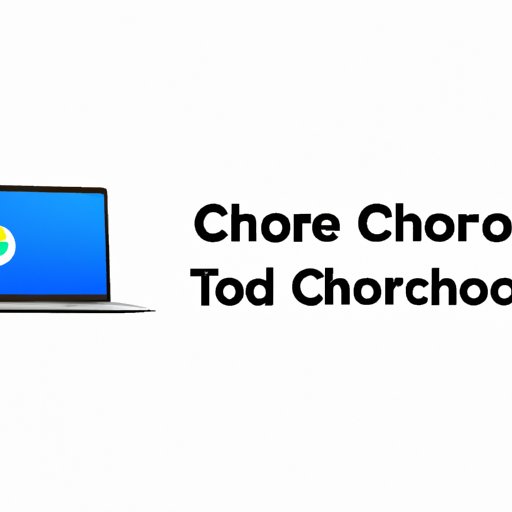How to Turn on Chrome OS Developer Mode
Have you ever encountered a problem with your Chromebook that requires a level of access beyond what a typical user account can provide? Perhaps you have hardware issues that require you to dig deeper, or you wish to install a new operating system. If so, Chrome OS developer mode is what you need.
In this article, we will walk you through the steps to enable Chrome OS developer mode and provide additional information on troubleshooting common issues and the benefits of using it. So let’s get started!
Step-by-Step Guide to Enable Chrome OS Developer Mode
Google provides Chrome OS developer mode as a way to assist developers in creating custom software. It’s like rooting or jailbreaking other devices, but this time for Chromebooks. One of the main benefits of enabling developer mode is that it eliminates critical boot verification checks, allowing users to install software from various sources.
Here is a detailed guide on how to turn on developer mode for your Chromebook:
Step 1: Backup Your Files
First, it’s essential to backup all saved files before enabling developer mode as it will wipe all data stored on the Chromebook. Ensure that any crucial files or data are stored elsewhere before proceeding with the next step.
Step 2: Enter Recovery Mode
Next, hold down the Esc and Refresh (F3) keys while pressing the Power button simultaneously. Hold these keys until the ‘Chrome OS is missing or damaged’ screen appears. Then press Ctrl+D, and a screen will display, warning you that the Chromebook is entering developer mode with instructions to press Enter if you wish to continue. Press Enter.
Step 3: Enabling Developer Mode
The Chromebook will reboot, and you will see a screen with a yellow exclamation mark. Press Ctrl+D again to go past this screen. The Chromebook will reboot again and enable developer mode, which can take around 15 minutes to complete. Do not press any keys during this time or remove AC power from the Chromebook.
That’s it! Your Chromebook is now in developer mode, and you can enjoy additional flexibility and control.
Note: If you encounter any problems or errors along the way, you can try holding down the space bar while booting so that your device can perform a hardware check. If you continue to have issues, consult with the Chromebook’s manufacturer.
Video Tutorial
If you prefer a visual explanation, we recommend taking a look at the following video tutorial provided by the Chromium team:
Video tutorials are ideal because they provide a visual demonstration of the steps to follow, making the process less daunting for new users.
Comparison with Other Developer Modes
Each operating system has its method for enabling developer mode, but the primary purpose is always similar—to allow for greater flexibility and customization. Linux, Ubuntu, MacOS, and Windows all enable developer mode.
The difference between Chrome OS developer mode and other modes is that it’s less intrusive and easy to use. For instance, rooting an Android phone can open it up to malware, while Chrome OS developer mode is relatively safe and user-friendly.
Troubleshooting Guide
Enabling developer mode on your Chromebook may encounter a few problems or errors that you can fix quickly. We’ve put together a list of some common issues that you may face and included quick solutions.
Issue 1: Chromebook Can’t Leave Developer Mode
If you’re having trouble leaving developer mode even after pressing the space bar on the warning screen, you can try power washing your device. Go to settings > Advanced settings > Powerwash to return your Chromebook to factory default settings.
Issue 2: Chromebook Stuck on Developer Mode Screen
If you encounter this issue, press Ctrl+D to bypass the screen and enter developer mode, then disable the firmware write protect. To disable firmware writing protection, turn off the Chromebook, press Esc+Refresh (F3), and then Power to boot into recovery mode. Press Ctrl+D, and then Enter to disable firmware write protect.
Use Case Scenarios
There are various situations in which using Chrome OS developer mode can be beneficial. Here are some examples:
Example 1: Installing Linux
With developer mode enabled, you can install Linux on your Chromebook and gain access to more powerful programming tools. This can be especially useful for developers who want to test Linux applications or work with virtual machines.
Example 2: Customizing Your Chromebook
While Chrome OS is straightforward and user-friendly, some people prefer to edit their settings and tweak their Chromebooks even more. Developer mode allows this by allowing users to access and edit low-level system functions.
Example 3: Debugging Your Code
With Chrome OS developer mode, you can create, test, and debug your code easily. Users can use debug tools and install code editors to gain full access to the system, making software development more comfortable and allowing for more powerful debugging.
Conclusion
In conclusion, enabling developer mode is a straightforward process that can open new opportunities and afford users greater control over their devices. We hope this article has provided a helpful guide on how to enable Chrome OS developer mode, troubleshoot common issues, and highlighted the benefits of using it.
